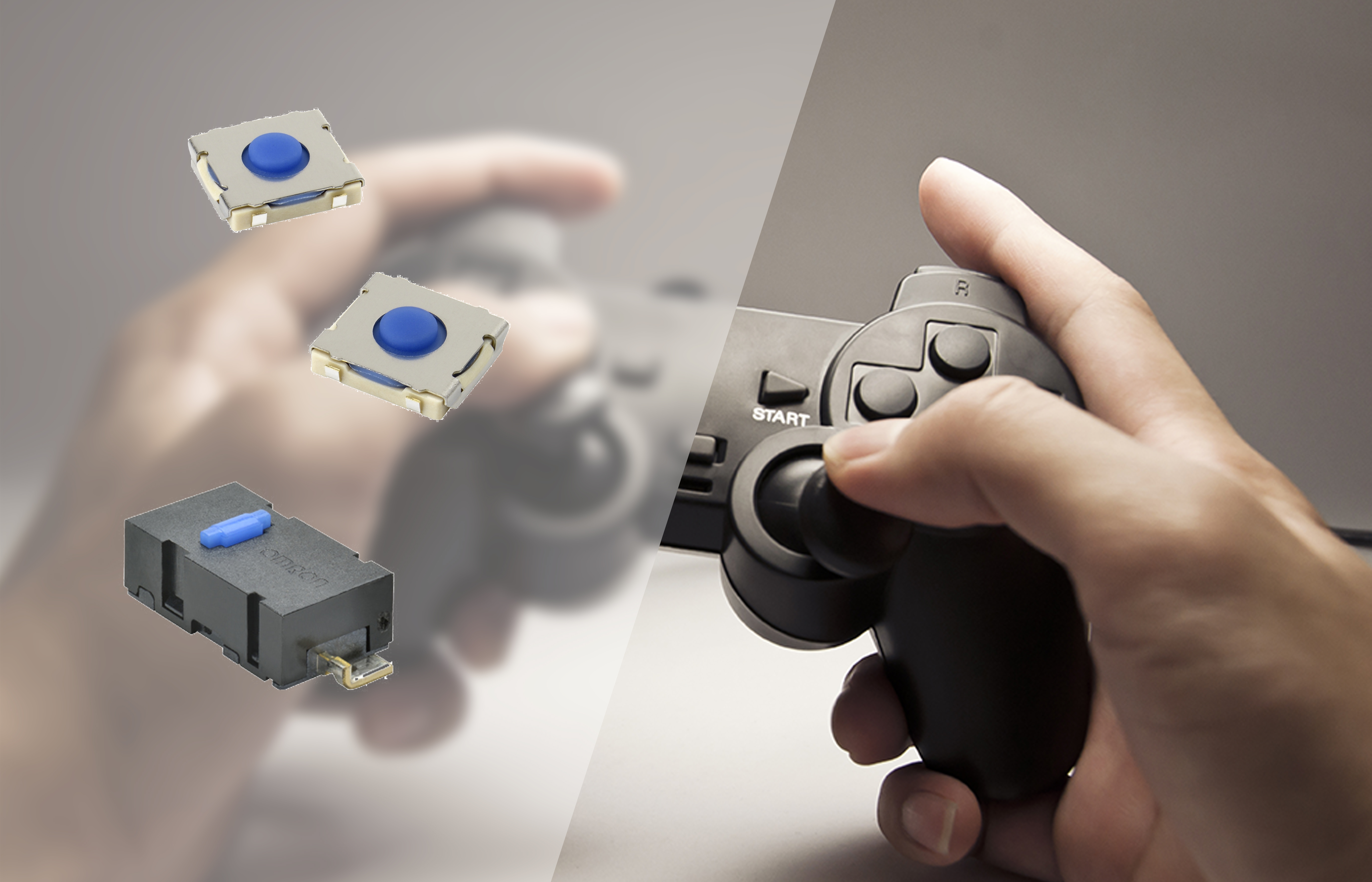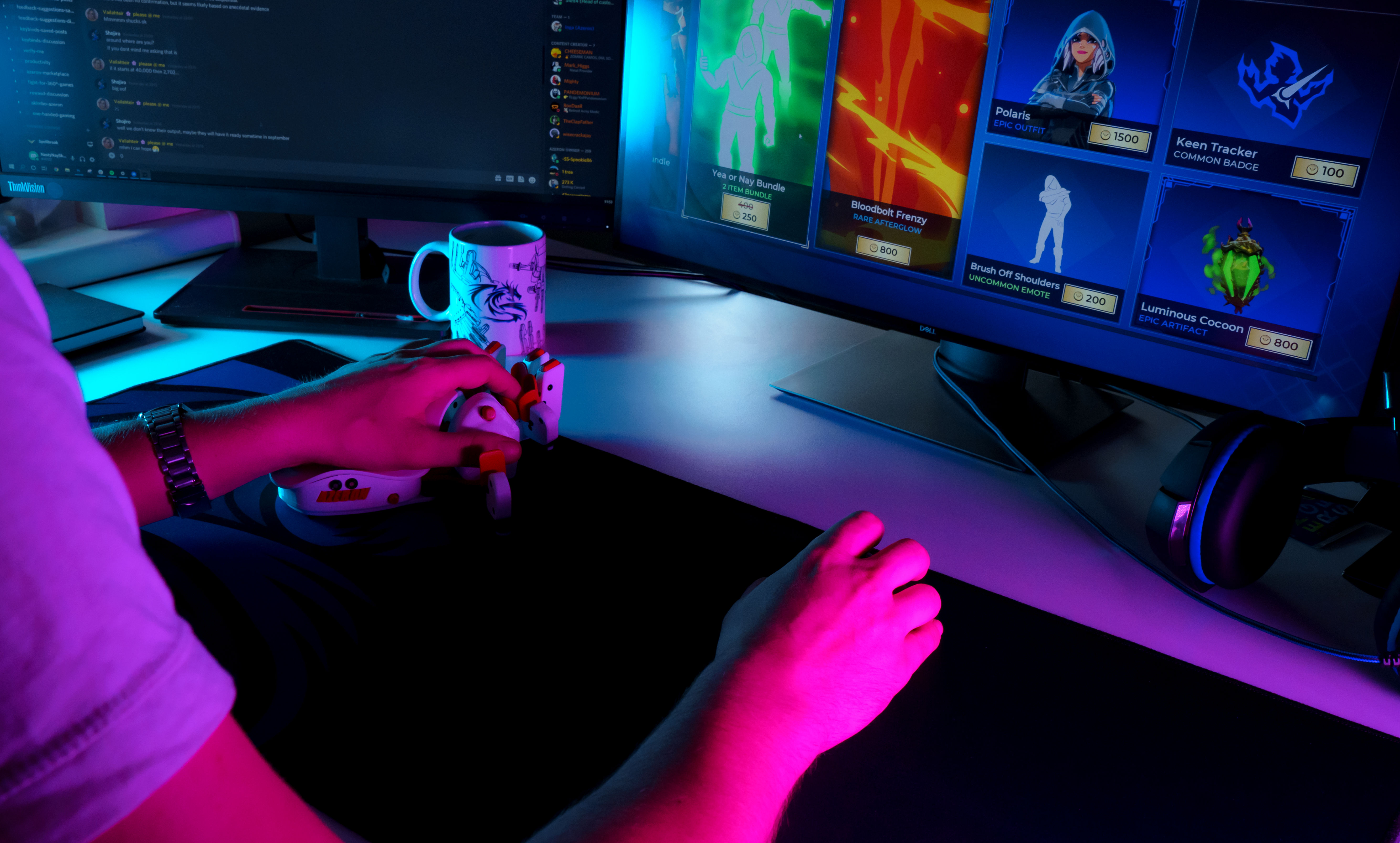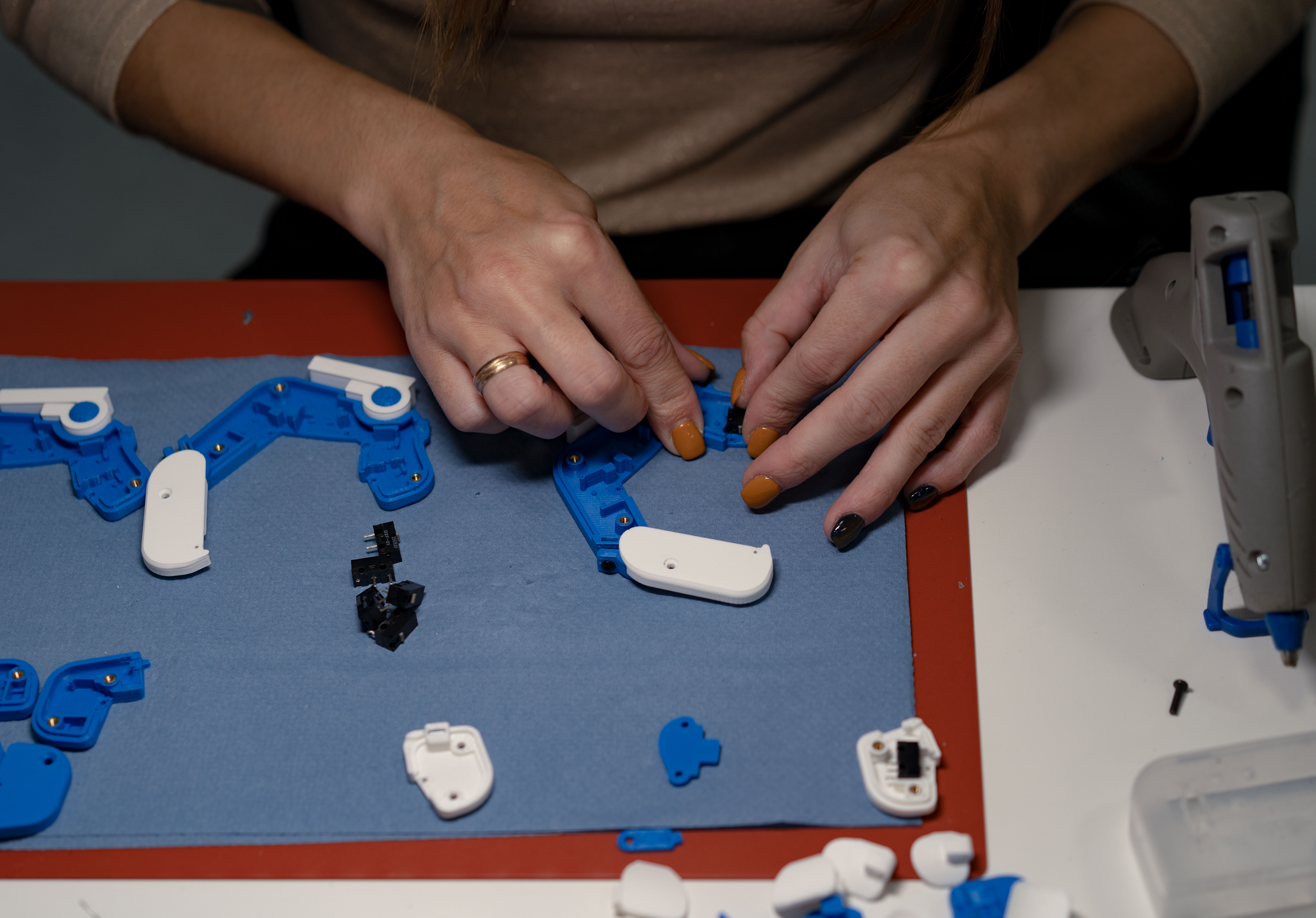Switches play a critical part in the billion-dollar esports industry
Esports or competitive gaming has grown to a billion-dollar industry – taking computer and console games to a new level. What is little appreciated, however, is the importance of electronic components to the industry. Iker Saenz, Product Marketing Manager – Switches, Omron Electronic Components Europe discusses.
Split-second tactics and clever console techniques depend on the small switches within the gaming hardware like joysticks, controllers and mice used today. It is fair to say that the esports player’s equipment is as critical to his or her performance as a Grand Slam tennis player’s racket, or the boots of top footballers. The electromechanical components within it are as unsung as the studs on those boots and the strings in those rackets, but equally influential on the outcome. This article will briefly explore the history of esports, then will look at the characteristics required for electromechanical components like switches in this exceptionally demanding application.
A brief history of esports
It is unsurprising that developments in esports have tracked technological progress in competitive gaming. We have certainly come a long way from Tennis for Two in the 50s, played with joysticks. In 1972, the first console that could be played with a television was launched, rolling out digital games to a wider network and in 1980, William Salvador Heineman was crowned the first winner of a national video game competition at the final of the Space Invaders championship in New York. In 1983, the U.S. National Video Team became the world’s first professional gaming team. Private internet connections and desktop computers further widened the gaming community, and the first ‘World Cyber Games’ were held in South Korea in 2000. Not only have the tournaments grown, but the financial incentives have too. When the ‘Championship Gaming Series’ of 2007 offered prize money of over one million US dollars, it was thought to be the most expensive esports event of all time to date.
Today, esports is bigger than ever before. According to the British esports association, esports are on track to reach revenues of almost $1.6bn by 2023, increasing from just $776m in 2018. The streaming platform Twitch has greatly broadened the audience of esports and tournaments have even been aired on networks like ESPN. 2020 marked the launch of the first esports BTEC and there are gradually more and more university courses on the subject.
Today’s gamers want entertainment based not just on the expertise of design engineers, but developed considering end user requirements. There’s certainly a ‘trickle-down’ effect of the technology tried and tested in a professional sports environment making its way to amateur gamers in their homes. According to the Ukie, the UK gaming industry body, sales of games saw an unprecedented 30% year-on-year increase in 2020, the timing of which aligned with Boris Johnson’s announcement of a UK lockdown in March. Therefore, there is huge demand for the technology in development at the fingertips of esports professionals. Omron global corporation includes hundreds of employees who consider themselves regular gamers, and is running a vast programme to get regular gamer feedback to ensure the products of the future are serving the most precise needs of customers.
Switch requirements for esports
For gaming joysticks, controllers and mice, the switches within need to offer long life, a clear click confirming actuation, durability and reliable performance. In esports these user interface devices are central to the performance. Failure during a game pretty much guarantees defeat for the player – and even a degradation in performance can affect the result. These switches are exceptionally intensively used, and will see thousands or tens of thousands of presses during play. For this reason, players usually insist on switches with a rated service life of millions of actuations – and will insist on components being replaced before major tournaments.

UI devices like joysticks, mice and controllers feature two main types of switch (Figure 1 above). The tactile switch which is directly operated by the player – giving feedback normally by way of a click. A typical application might be the side button of a mouse or the button in a controller. Where these aren’t practical, designers use micro-switches which can be actuated via a lever allowing them, for example, to be connected to the case of a mouse for operation. This means that not only the switch itself, but also the lever and its attachment to the component and the case are critical.
Controllers and mice require tactile switches with exceptional performance and durability characteristics (Figure 2 below). Omron offers a range of such components, including the B3F-4000 (4.3mm profile), the B3SL (3.4mm profile) and the new and ultra slim B3SE (just 2.0mm profile). Despite its ultra-compact size, the B3SE functions for at least 5 million operations.

Omron micro-switches like the D2FC offer a superior feeling and reaction without compromising quality or durability and are therefore widely used in high-end mouse, joystick and controller designs. For example, the D2FC is offered in styles supporting up to 60 million operations, with a low powering force of 0.44 N. Omron also offers a compact surface mounting style, the D2LS, with a selectable operating force of 0.6N and 1.2N and a durability of 5 million, 10 million or even 20M operations.
Azeron gaming keypad design
Switches from Omron form the basis of a new and highly innovative gaming keypad from Latvian start-up Azeron that is setting the gaming world on fire. Launched in July 2021, the Azeron Cyborg is the next-generation Azeron keypad that raises the bar in gaming with deep adjustability, full programmability and exceptional comfort.

Within the Cyborg, 23 Omron D2F ultra-subminiature basic microswitches provide the electromechanical interface. Azeron chose the D2F because of its sophisticated snap action mechanism constructed with two highly precise split springs to ensure a long and reliable service life. Commenting, Imants Daigins, Product Designer and Founder of Azeron, said, “We have received universally good feedback on the switches since we standardised them in 2020, so decided to continue to use them in the Cyborg, our most versatile and flexible ever keypad. Influencers and tech reviewers with thousands of followers have confirmed that the Omron switches are high quality. You can feel the difference the first time you use the Azeron keypad, and the effect doesn’t disappear over time.”
The key requirements for Azeron are durability and the ‘feel’ of the product to the user. Of course, it is also essential to Azeron’s reputation that the switches are tough enough to withstand fast, frequent keypresses over long periods. Azeron evaluated several alternatives before selecting Omron as their principal supplier of switches. They have found that D2F switches offer the durability Azeron and its users expect. Since Azeron adopted Omron switches, it has decreased its switch repairs by about 98%. The feel of the switch is also important to the customer’s experience of the keypad and their success with their games. Azeron designers seek to provide users with a smooth travel, maintaining the same level of resistance throughout the movement of the key, with a nice crisp click to confirm operation. Omron switches provide the high quality feel they sought, with an operating force of between 140-160gf. This is heavy enough to provide a feeling of resistance but light enough to make the switch easy to actuate even when flicking the finger upwards.

Conclusion
In spite of their minuteness, electronic components contribute vastly to the speed and enjoyment of an overall gaming experience – and are critical to the player’s performance. Today’s devices feature direct input from end users, and attention to detail is vital. Esports have come a long way from early games of Tic-Tac-Toe and at Omron, we’re excited to see what the future may hold for competitive gaming, and the thrilling new experiences this will bring to amateur gamers at home.


